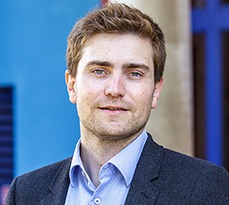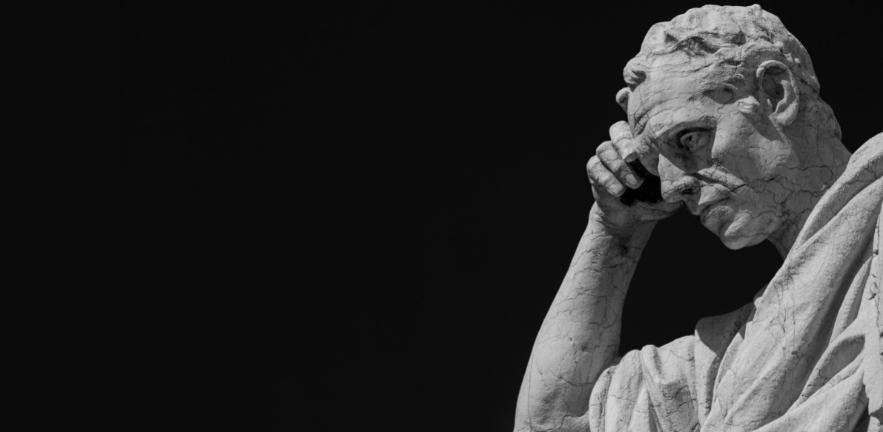The roles of ‘respectability’ (age and recognition) and ‘reputability’ (artistic merit and celebrity) are very different in driving philanthropic donation to cultural organisations, finds new study co-authored by Dr Thomas Roulet of Cambridge Judge Business School.
Within the worlds of the arts and philanthropy, it’s long been accepted that cultural organisations – such as theatres, opera and museums – possess “symbolic capital” that make them attractive to donors owing to their prestige. But while there has been much research on corporate benefactors, little attention has focused on arts beneficiaries and how their characteristics drive the process.

A study forthcoming in the journal Organization Science, co-authored by Dr Thomas Roulet, Associate Professor in Organisation Theory at Cambridge Judge Business School, takes a closer look at the attractiveness of such dance, music and other creative arts groups as philanthropic beneficiaries – and draws a key distinction between the effect of “respectability” and “reputability”.
“Respectability”, which is usually linked to a cultural organisation’s age and institutional recognition, is universally beneficial to the group in terms of attracting donors – as it enhances the donors’ social standing among key stakeholders. However, “reputability” – which is associated with artistic celebrity, professional merits of group members, and superior professional performance – can deter potential donors by increasing the risk of jeopardising other key relationships, particular with governments.
Further, the study finds that the presence of a board of trustees – which signals openness to involvement by a variety of outside stakeholders – diminishes the appeal of respectability for potential donors.
“The presence of a board of trustees signals pre-existing relationships between the cultural organisation and other stakeholders who may have diverging interests,” says co-author Dr Thomas Roulet of Cambridge Judge Business School. “This affects the perceived value of the donor-beneficiary relationship in the eyes of potential donors by diluting the exclusivity of the engagement.”
“While we understand the importance of boards of trustees in arts organisations, this dynamic with regards to donors is something that arts groups need to recognise.”
Practical implications for philanthropy in the arts world
The core practical implication of the study is for cultural organisations in need of philanthropic resources: those groups can assess what makes them attractive to donors, and understand how their history and artistic prowess matter differently. Importantly, their political positioning also plays an essential role which might differ from one context to another: in the context of Russia, political opposition to the current government will also distance organisations from corporate donors.
The study is based on data, interviews and other sources relating to 449 theatres in Russia in the period 2004-2011 (a representative sample of the theatre industry in the Russian Federation), a period after the demise of the Soviet Union in which Russian theatres, often in dire economic straits, sought new forms of support under a newly recognised legal form of “autonomous organisation”.
“Our study is especially timely in light of the tragic events in Ukraine in February-March of 2022 and the unprecedented public pressure put on Russian arts institutions and celebrated artists to reveal their political position,” the study says.
Symbolic capital
“It is time, more than ever, to move beyond our understanding of symbolic capital as a simple magnet bonding pragmatic beneficiary-benefactor relationships and rather as a nuanced conduit revealing expected political responsibilities demanded by multiple audiences.”
The concept of “symbolic capital” originated in the early 1980s by sociologist Pierre Bourdieu, who said that such capital makes cultural organisations attractive to social actors who, in turn, provide economic support. Until now, the concept of symbolic capital had not been properly operationalised and explained. Yet as the study notes: “Corporate philanthropy does not happen in a vacuum; it involves other stakeholders – including third parties and other benefactors – beyond the focal donor and the recipient”, and this can alter the perceived value of this symbolic capital, particularly if it increases reputational risk.
Collaborative efforts in creative arts
For Dr Thomas Roulet, the new study follows several previously published papers on different topics relating to the creative arts, including philanthropy.
A study published last year in the journal Business Ethics Quarterly examined how famous ballets such as The Nutcracker and Giselle can help rethink stakeholder relationships to better address society’s “grand challenges” such as poverty and the environment. The case of cultural organisations is one of embeddedness within a system of stakeholder ties where relationships with governments might have a ricochet effect on relationships with corporate donors. Philanthropic beneficiaries are, in other words, dancing not only with donors but also with a range of other actors who cannot be kept out of the picture when making decisions.
“Tackling grand challenges such as poverty, climate change, modern slavery, political instability – and more recently, the COVID-19 (coronavirus) pandemic – have required, and continue to require, sustained collaborative efforts from an array of diverse stakeholders,” says the study. “We argue that stakeholders in a system and around a focal organisation behave as dancers on a stage: despite having their own roles, functions and purposes, the actors are interdependent and coordinate to produce a performance.”
A 2020 study in the Academy of Management Journal drew off perspectives of the art world in Venezuela to demonstrate how people “use the material, social, and symbolic dimensions of space to challenge and maintain their key values and practices—and that these three dimensions are intertwined”. It looked into how authoritarian governments (in that case the Chavez government) would try to influence art to align with political objectives, and alienate those cultural actors who oppose such alignment.
A 2016 study co-authored by Dr Roulet in the Academy of Management Journal examined the relationship between corporate benefaction and peer recognition. The research, which also focused on Russian theatres, found that the number of corporate donors can have a negative effect on peer recognition on the part of donors, but this can be mitigated if beneficiaries limit the breadth and depth of relationships.
The new study – “The façade, the face, and the sympathies: opening the black box of symbolic capital as a source of philanthropic attractiveness”– is co-authored by Yuliya Shymko of Audencia Business School in Nantes, France; Dr Thomas Roulet of Cambridge Judge Business School; and Bernardo de Melo Pimentel of Forward College in Paris, Nova School of Business and Economics in Lisbon, and ISEG Lisbon School of Economics & Management.


